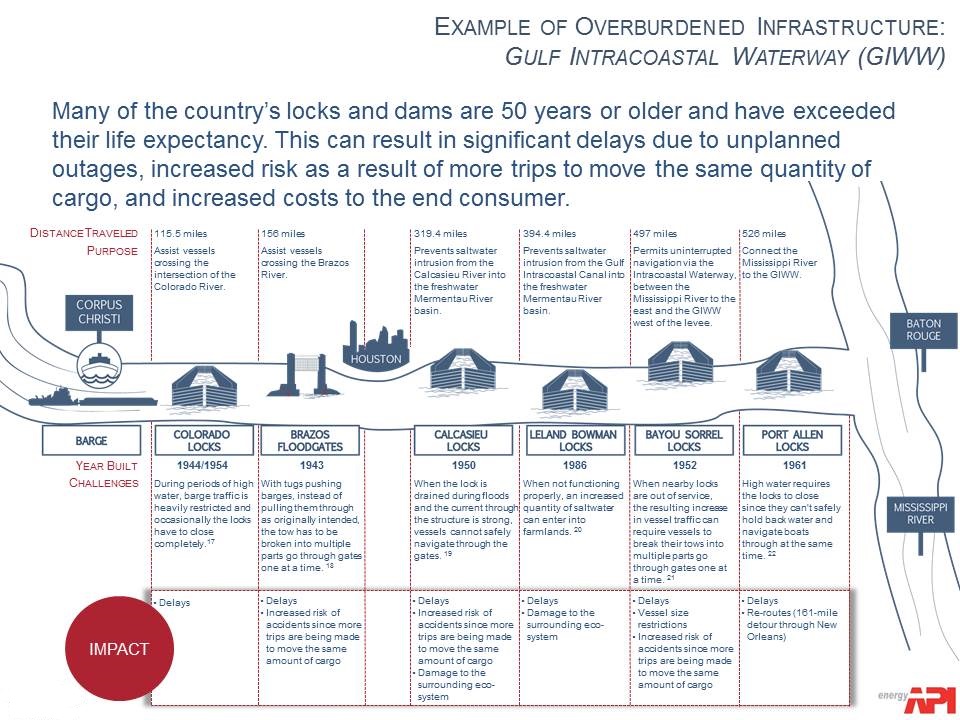State of Maritime

Current State of U.S. Maritime Infrastructure
Ports serve a critical function in the maritime infrastructure. They are the primary embarkation and entry points for more than 95% (by volume) of overseas trade produced or consumed by the United States. Physical impediments to the movement of goods through ports, such as shallow depths that limit the size of ships, the lack of access to interconnecting modes of transportation, or the narrowing of channels that increase the risk of ship collisions can cause significant delays and incur tremendous costs to shippers and consumers. Understanding potential physical choke points at ports is critical to shippers, port operators and the owners of goods to ensure transportation routes are managed safely and efficiently. Impediments to efficient transportation through U.S. ports include:
Restrictions to Efficient Transport through Ports:
- Restrictive port surface bottoms
- Deferred dredging
- Lack of intermodal connections
- High cost of upgrading for maximum effectiveness
Restricted Operational Flow:
- Outdated navigational technology
- Pilot and staff shortages
- Lack of agility to respond to increased market demand
- Need for breaking tows into multiple parts
- Need for conducting offshore lightening or light-loading
U.S. maritime is in critical condition, limiting the competitiveness of domestically produced goods. The average age of locks in the United States now exceeds 50 years. Many were built in the 1930s, with the newer generation built in the 1950s. As a result of aging infrastructure and under investment in modernization, delays, back-ups and added costs are common events for barges and tows traveling through inland waterway systems. According to a report by the Army Corps of Engineers, “Long-established programs for advance maintenance of principal lock components have essentially given way to a fix-as-fail policy, and even then the fix may take weeks or months to complete. Depending on the nature of the lock malfunction, this protracted repair time can have major consequences for barge traffic that depends on the facility, and for shippers and manufacturers depending on timely delivery of their cargo.”
Restrictions to Efficient Transport through Locks, Dams and Floodgates:
- Too narrow
- Too shallow
- Vessel size restrictions create inefficiencies
- Daylight passage restrictions
- Under funding for completing dredging activities
- Prioritization of water uses during droughts



